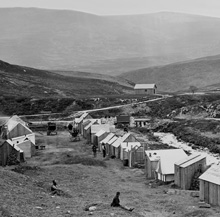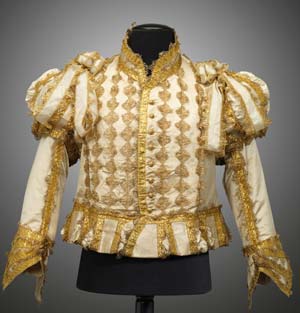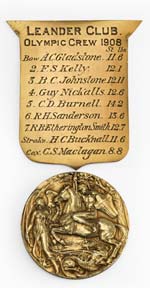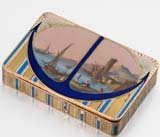|
NEW UK GOLD RUSH
The new gold dig at Loch Lomond, given the go-ahead this autumn, is unlikely to spark a repeat of an earlier Scottish gold rush in 1869. Then, a prospector on the Duke of Sutherland’s estate at Kildonan found significant quantities of the precious metal, prompting hundreds of would-be prospectors to invade the region.  Two shanty towns were established, including, of course, a saloon, and the miners beavered away that summer with some success. Two shanty towns were established, including, of course, a saloon, and the miners beavered away that summer with some success.
But with the onset of a Scottish winter, complaints about the prospectors from local farmers to the Duke, and a drop in the price of gold, interest waned. The Duke said that they must pack up their tents and leave, with rather more success than the Dean of St Paul’s, and by the end of the year it was all over.
Yet this is by no means the only instance of gold mining in Britain. In Wales, it can be traced back to the Bronze Age; a new gold strike was made at a centuries-old mine in Cornwall just last year; and Devon still attracts panners. But no UK pan-handler is likely to strike it rich with the amounts to be recovered, though the major development company at Loch  Lomond must have high hopes. Lomond must have high hopes.
British resources of the precious stuff may not have matched those in other parts of the world, but London has been at the heart of the international gold trade over centuries. The Goldsmiths Company in the City is recognised as the authority, and since 1300 has been responsible for testing gold quality as the earliest consumer protection body in the world.
And to mark this long history, in the Queen’s Diamond Jubilee year 2012, The Goldsmith’s Company is staging its first ever exhibition to celebrate the working and use of gold in the United Kingdom over 4,500 years.
 Privy to a sneak preview at the Company’s splendid gilded hall in the City, we can reveal that this will be quite the most ambitious and far reaching gold event, not to be missed by gold aficionados. Privy to a sneak preview at the Company’s splendid gilded hall in the City, we can reveal that this will be quite the most ambitious and far reaching gold event, not to be missed by gold aficionados.
Under the title ‘Gold: Power and Allure’, it will tell the story of Britain and its unique relationship with gold, and provide a showcase of gold treasures from as early as 2500 BC to the present day. Brought together from private collections as well as museums and institutions, it will show off the versatility and beauty of the metal as well as the skill and artistry of those who have worked it over the years.
Some of the exhibits on show at this presentation included such stunning pieces as an Irish lunula, a necklet dating from 2000-1500 BC; a bejewelled brooch from the 14th century; a ring from Elizabeth 1; and a teapot racing trophy of the mid-1700s.
More recent are the gold Olympic medals – pure gold medals were presented at only four Olympiads, the 1900, 1904, 1908 and the 1912. Nowadays, they are silver coated with gold. This example, above, was presented at the 1908 Games.
In the realm of clothing, gold has been more  usually associated with decoration. But its ability to be drawn out into long, flexible strands means that it can and has been woven into cloth. (Indeed, Scabal has recently marketed a suiting with gold thread.) A gold court jerkin from the coronation of George lV will be one of the exhibits. usually associated with decoration. But its ability to be drawn out into long, flexible strands means that it can and has been woven into cloth. (Indeed, Scabal has recently marketed a suiting with gold thread.) A gold court jerkin from the coronation of George lV will be one of the exhibits.
The exhibition, to run from June 1st to July 28th 2012, will be supported by plenty of information and talks, and linked to other events at the Guildhall Art Gallery and the Bank of England Museum. And to emphasise gold’s influence well beyond the confines of the City of London, a ‘Gold Trail’ is being set up. This winds through the UK, taking visitors to gold collections, museums and other places of golden interest – such as the Gold Palm Room at Spencer House, the Royal Cornwall Museum and the Scottish Crown Jewels in Edinburgh.
For those who can’t wait until next year for their gold fix, there are open-day tours of the Goldsmiths’ Hall in December and January. Go to www.thegoldsmiths.co.uk for details.
From the top: the Wild West Scottish gold town of Kildonan in the 1800s; golden jerkin for George lV's coronation; and Nelson's gold snuff box.
|